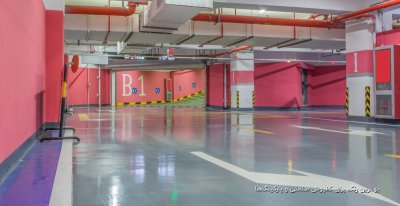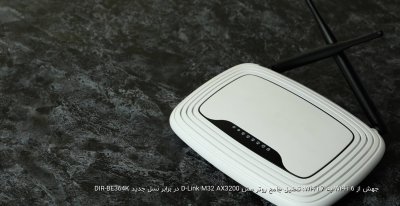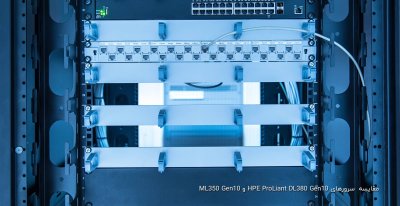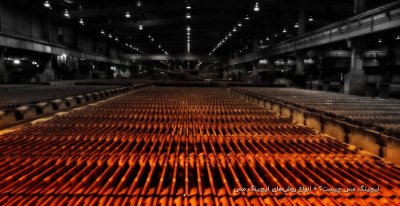LinkinForEver
مسئول بخش برنامه ها و مسائل گرافیک سه بعدی
architect7551 عزیز من منتال کارم اگر با عکس بگذاری ممنون میشم تا جواب دقیق تر بدم.
تاپيك خوبيه
اميدوارم با كمك همه خوب پيش بره
توي editable poly موقعي كه مي خوايم كل edge هاي يك مسير انتخاب بشن با انتخاب يكي و زدن دكمه loop همه رو انتخاب مي كنيم، ولي ظاهرا راهي براي انتخاب كل vertex , face يه مسير به صورت مستقيم وجود نداره، ولي چرا داره
edge هاي يك مسيرو با loop انتخاب كنيد و بعد كليك راست كرده و convert to face يا convert to vertex رو بزنيد
سلام به همگی،یه نکته دیگه یادم اومد،تو مکس میشه میزان level ها یا تعداد مرحله های undo یه محیط رو افزایش داد،شما میتونید از قسمت preference setting>general>scene undo میزان مرحله های undo رو افزایش بدین......پس دیگه نگران خراب کاری تو محیط تون نباشید چون این قسمت شما رو مجدداً بر میگردونه همونجایی که مد نظرتونه......!
شاد و پیروز باشید
render region هم که از main toolbar و رول آوت render type قابل دسترسیه،دقیقاً کنار آیکونه (quick render (production هستش،دوستان هم که حتماً با کاراییش آشنا هستن.
شاد و پیروز باشید
با گزينه add default lights to scene در منوي view هم مي تونيد نورهاي پيش فرض صحنه رو ظاهر كنيد
البته بايد تيك 2lights رو در قسمت rendering method در پنجره viewport configuration زده باشيد
اگه چند تا نور توي صحنه داشته باشيد، با تيك زدن default lighting هم در همون قسمت قبلي نور كل صحنتون در پرويو به صورت پيش فرض در مياد
سلام؛
تا حالا شده به خودتون بگید کاشکی میشد رنگ خاکستری محیط و منوهای 3ds max رو عوض کرد؟

البته انتخاب این رنگ حکمتی داشته چون این رنگ در دراز مدت باعث کمتر خسته شدن چشم نسبت به رنگهای دیگه میشه.
ولی تنوع هم چیز خوبیه، پس...
از منوی customize گزینه customize ui and default switcher رو انتخاب کنید، در پنجره جدید باز شده در منوی سمت راست 4 حالت وجود داره که یکی از اونها رو میتونید انتخاب کنید.
امیدوارم خوشتون اومده باشه.
ctrl+l هم کلید میانبرش
برای قسمت محور مختصات
f5,f6,f7,f8 به ترتیب محورهای x,y,z,(xy,xz,yz)i رو فعال میکنه
x هم که محور مختصات رو قفل میکنه
+- هم محور رو بزرگ و کوچیک میکنه
alt+x هم حالت see through (حالتی که جسم به صورت شفاف در میاد و اجسام پشت آن قابل رویت میشوند) رو فعال میکنه
ctrl+x هم محیط کاری مکس رو به تمام صفحه گسترش میده (با alt+w اشتباه نشه که یک view رو ماکزیمم میکنه )
این چیزایی رو که یادمه گفتم
چقدر مطالبم مرتبط با هم بود
در vray اگر حالت light cache را انتخاب کرده اید مقدار number of passes را به تعداد هسته های cpu تان قرار دهید. اعداد بالاتر منجر به بلوری شدن تصویر از جمله سایه ها میشود بدون اینکه تاثیری در افزایش سرعت داشته باشد. ولی اعداد پایینتر منجر به افزایش کیفیت ولی عدم به کارگیری تمام توان cpu میشود. لذا اگر cpu شما 2 هسته ایست آن را روی عدد 2 بگذارید.
ضمنا در رابطه با مطلب بالایی که مربوط به سایز render region division بود هرچه مقدار آن بیشتر شود به ram بیشتری نیاز دارید. لذا نباید مقدار آن زیاد شود. ضمنا بهبود سرعت آن هم خیلی محدود است و به طور نسبی افزایش پیدا نمیکند. یعنی اگر در یک مدل سبک 10 درصد افزایش باشد اینطور نیست که در یک مدل سنگین هم 10درصد باشد. اگه به کمی ram هم بخورید که نتیجه خیلی وخیم میشود.
در help وی ری یک تنظیم پیشنهادی وجود داره که ادعا کرده برای اکثر صحنه های تک فریم کیفیت عالی به همراه داره. اصل کارهم بر این استواره که مقدار ماکزیمم subdivision رو در قسمت image sampler بالا برده. این هم اصل مطلبthe "universal" settings comprise a set of settings that we have found to work very well for still images in many situations. Please note that these settings are not optimal, in the sense that with enough tweaking, you can probably get similar quality with faster render times. The beauty of these settings though, is that they require almost no tweaking and you are guaranteed to get a good result in the end.setting the v-ray renderer
The advantages of these settings are:
of course, there is a disadvantage: The scene may render quite slow. With tweaking, you may get faster results.
- very little parameters for controlling render quality vs speed (essentially, only the noise threshold);
- they work for a very large number of scenes;
- they typically produce high-quality results.
These settings work, because the high aa subdivs essentially cause all the sampling to be performed by the image sampler. It will take as many samples per pixel as required to achieve the specified noise threshold. In many ways, this is similar to ppt (progressive path tracing), but is done on a per-bucket basis and the number of samples is adaptive for each pixel.
1. Set v-ray as the current rendering engine (with the default v-ray settings).notes
2. In the image sampler rollout, switch the image sampler type to adaptive dmc. Set the max. Subdivs to 100 (one hundred). Leave the min. Subdivs to 1.
4. In the indirect illumination rollout, turn gi on, set the primary gi engine to brute force. Do not change the subdivs. Set the secondary gi engine to light cache.
5. In the light cache rollout, set the light cache interpolation samples to 5.
6. In the color mapping rollout, make sure that the clamp output and sub-pixel mapping options are off.
7. In the dmc sampler rollout, set the adaptive amount parameter to 1.0. Typically you will also need to adjust the noise threshold as the default may produce too much noise. A good value is, for example, 0.005.
8. You can also controll the noise directly from the image sampler rollout, if you uncheck the use dmc sample thresh. Parameter, and adjust the clr. Thresh instead (e.g. To 0.005).
- leave all subdivs anywhere at their default values. They won't have any effect anyways - the 100 aa subdivs will almost certainly override everything else.
- avoid using sharpening aa filters. They can make the noise more apparent.
در help وی ری یک تنظیم پیشنهادی وجود داره که ادعا کرده برای اکثر صحنه های تک فریم کیفیت عالی به همراه داره. اصل کارهم بر این استواره که مقدار ماکزیمم subdivision رو در قسمت image sampler بالا برده. این هم اصل مطلبthe "universal" settings comprise a set of settings that we have found to work very well for still images in many situations. Please note that these settings are not optimal, in the sense that with enough tweaking, you can probably get similar quality with faster render times. The beauty of these settings though, is that they require almost no tweaking and you are guaranteed to get a good result in the end.setting the v-ray renderer
The advantages of these settings are:
of course, there is a disadvantage: The scene may render quite slow. With tweaking, you may get faster results.
- very little parameters for controlling render quality vs speed (essentially, only the noise threshold);
- they work for a very large number of scenes;
- they typically produce high-quality results.
These settings work, because the high aa subdivs essentially cause all the sampling to be performed by the image sampler. It will take as many samples per pixel as required to achieve the specified noise threshold. In many ways, this is similar to ppt (progressive path tracing), but is done on a per-bucket basis and the number of samples is adaptive for each pixel.
1. Set v-ray as the current rendering engine (with the default v-ray settings).notes
2. In the image sampler rollout, switch the image sampler type to adaptive dmc. Set the max. Subdivs to 100 (one hundred). Leave the min. Subdivs to 1.
4. In the indirect illumination rollout, turn gi on, set the primary gi engine to brute force. Do not change the subdivs. Set the secondary gi engine to light cache.
5. In the light cache rollout, set the light cache interpolation samples to 5.
6. In the color mapping rollout, make sure that the clamp output and sub-pixel mapping options are off.
7. In the dmc sampler rollout, set the adaptive amount parameter to 1.0. Typically you will also need to adjust the noise threshold as the default may produce too much noise. A good value is, for example, 0.005.
8. You can also controll the noise directly from the image sampler rollout, if you uncheck the use dmc sample thresh. Parameter, and adjust the clr. Thresh instead (e.g. To 0.005).
- leave all subdivs anywhere at their default values. They won't have any effect anyways - the 100 aa subdivs will almost certainly override everything else.
- avoid using sharpening aa filters. They can make the noise more apparent.
اگر علاقمند به حالت light cache هستید اصلیترین دردسر شما مقدار مناسب برای subdivide هست.اگر نمیتونید حدس بزنید چه رقمی برای شما مناسب است یک عدد بالا مثل 10000 یا 20000 رو انتخاب کنید سپس mode
progressive path tracing را انتخاب کنید و هر وقت فکر کردید که طاقتتون تمام شده کار رو cancel و در قسمت light cache روی save کلیک و به mode - from file رفته و با browse فایل save شده را انتخاب و دوباره رندر بگیرید.حالا دیگر light cache محاسبه نمیشود و همون کیفیت رو که در مرحله قبلی پسندیدید رندر میگیرد.











